Afton, Virginia school teacher Katrien Vance wrote to share her experiences using the documentary film The Rebellious Life of Mrs. Rosa Parks in the classroom. Based on the bestselling biography of the same name by Jeanne Theoharis, the film helps students understand the lifetime of activism that Rosa Parks embodied, which is too often overshadowed by her refusal to change seats on a bus in Montgomery. Instead, using the film, Vance’s students created a road map that better illustrates the rebellious life of Mrs. Rosa Parks.
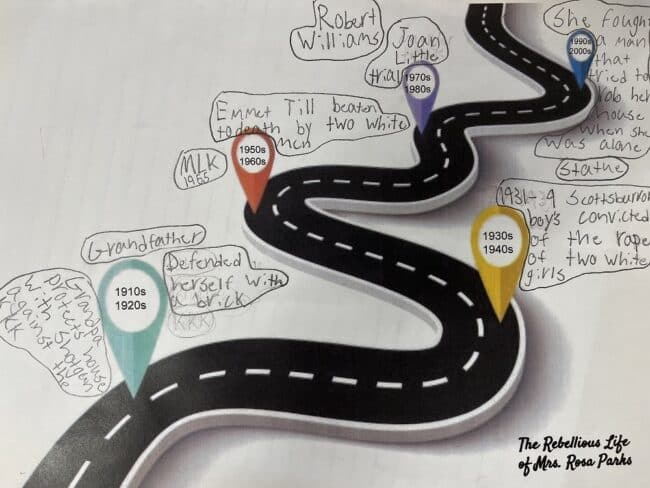
By Katrien Vance
This week I used the movie The Rebellious Life of Mrs. Rosa Parks and one of the lessons from the teaching guide with my seventh and eighth graders.
Every year, my school pays particular attention to Martin Luther King Jr. Day. We are a small, rural, private, pre-K through eighth-grade school in Afton, Virginia.
Each year, I choose a different focus with my students. Last year, we talked about the Children’s March, using a film from Teaching Tolerance. Some years I might talk more about nonviolence and include writings by Bayard Rustin, as well as Dr. King. This year, given this opportunity, I chose to focus on Rosa Parks.
I began by letting the students know that we were going to talk about something where they thought they knew the story, but that the story they knew was wrong — or at least incomplete. I gave them a little bit of context for the Civil Rights Movement (prepping them for our look at Reconstruction later this winter). If they have been at my school for any time, they have heard about the basics of the Civil Rights Movement, and they have heard about people like Rosa Parks, Ruby Bridges, and Dr. King. But because they are young, they often hear a very simple story.
I followed the lesson about the master narrative and counter-narrative pretty closely, first helping the kids understand what a master narrative is, then talking about the master narrative for Rosa Parks, and then talking about a counter-narrative, and using the links in the lesson to offer the counter-narrative. We looked at the article “10 Ways to Teach About Rosa Parks” and the kids began making note of things that surprised them or things they did not already know.
When I first asked them for adjectives describing Rosa Parks, my students offered words like brave, persistent, righteous, and independent. She was definitely a heroic figure for them. I asked how old they thought she was on the bus, and they felt she was elderly, and that was one of the reasons that she “needed” to sit down. After reading “10 Ways to Teach About Rosa Parks,” the students had a lot more information and were beginning to see that the picture they had of Rosa Parks was incomplete. Again, I asked them what was new information for them, and they talked about her childhood, her activism, and her embrace of self-defense as a possibility.
Then we watched the movie. I gave them a piece of paper with an image of a road with signs marking the decades of her life. I told them there would be no quiz or test, and they were not taking notes in order to study from, but that they should make a note of things they thought were important, or things that surprised them, or things that stood out to them. I’ve attached some pictures of their notes for you to see. I would pause the movie once in a while if there was a figure I was not sure they knew much about, such as Malcolm X, Nelson Mandela, or Emmett Till so that I could give them some context for those scenes. Other than that, we watched straight through, in a 40-minute block one day, and an hour the next day.
We watched the entire movie, and the kids really liked it. We had a short conversation after finishing it about three main topics:
1. What have they learned?
2. What did they want to make sure other people learned about Rosa Parks?
3. Does it matter when we have an inaccurate or incomplete narrative?
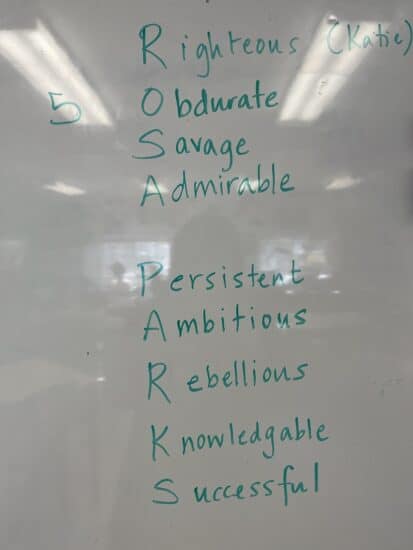
The next day, I asked students if they were going to do some sort of project with this information, what would they like to do? We have an all-school assembly every Friday afternoon, and I wanted my students to present something at that assembly to show what they had learned during the week. The challenge with that kind of presentation is that it needs to be accessible to kindergartners through sixth graders, and still be meaningful for the seventh and eighth graders who are presenting. The class was split between presenting a sort of acrostic poem, in which they chose words for each letter of Rosa Parks’s name, making sure to choose words that presented a fuller picture of who she was, and re-imagining the statue of Rosa Parks.
The Zinn Education Project materials made a big difference in my students’ understanding and appreciation of Rosa Parks and her legacy, and also their awareness of the way that narratives get simplified.
As the boys were redesigning her statue, they had wonderful conversations. They were adamant that she be standing, that she have some sort of strong gesture, like a clenched fist or a balled fist, and that she be speaking — oh, and that she be “young.” We’re going to D.C. in May, and on our tour of the Capitol, I’ll make sure they see Rosa Parks’ statue in person. We do a lot of thinking about memorials at the end of our American history year, and adding her statue to this conversation has been wonderful.
Please share your story of using The Rebellious Life of Mrs. Rosa Parks in the classroom. We can send you copies of the Young Readers version of the book in appreciation.

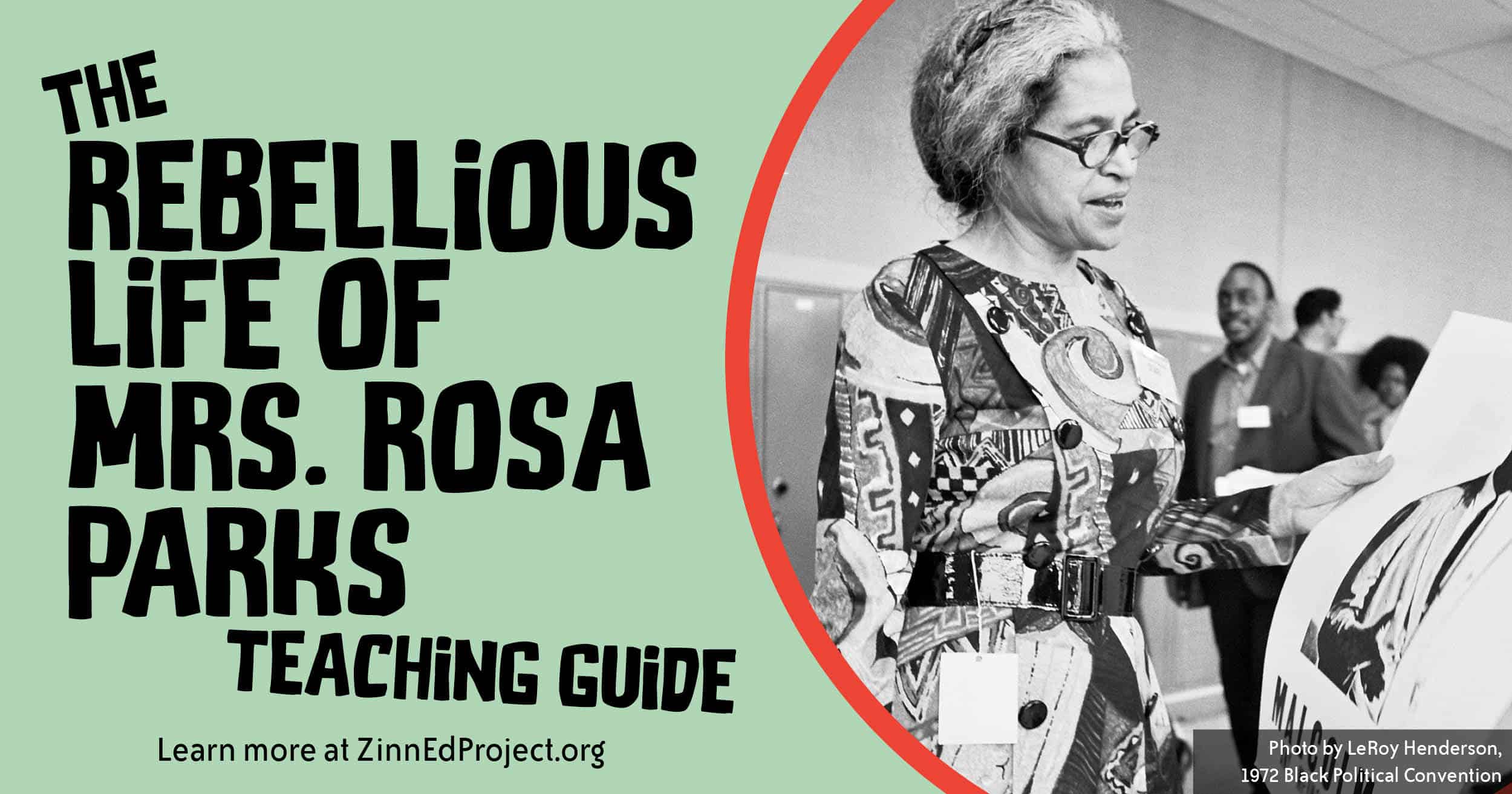
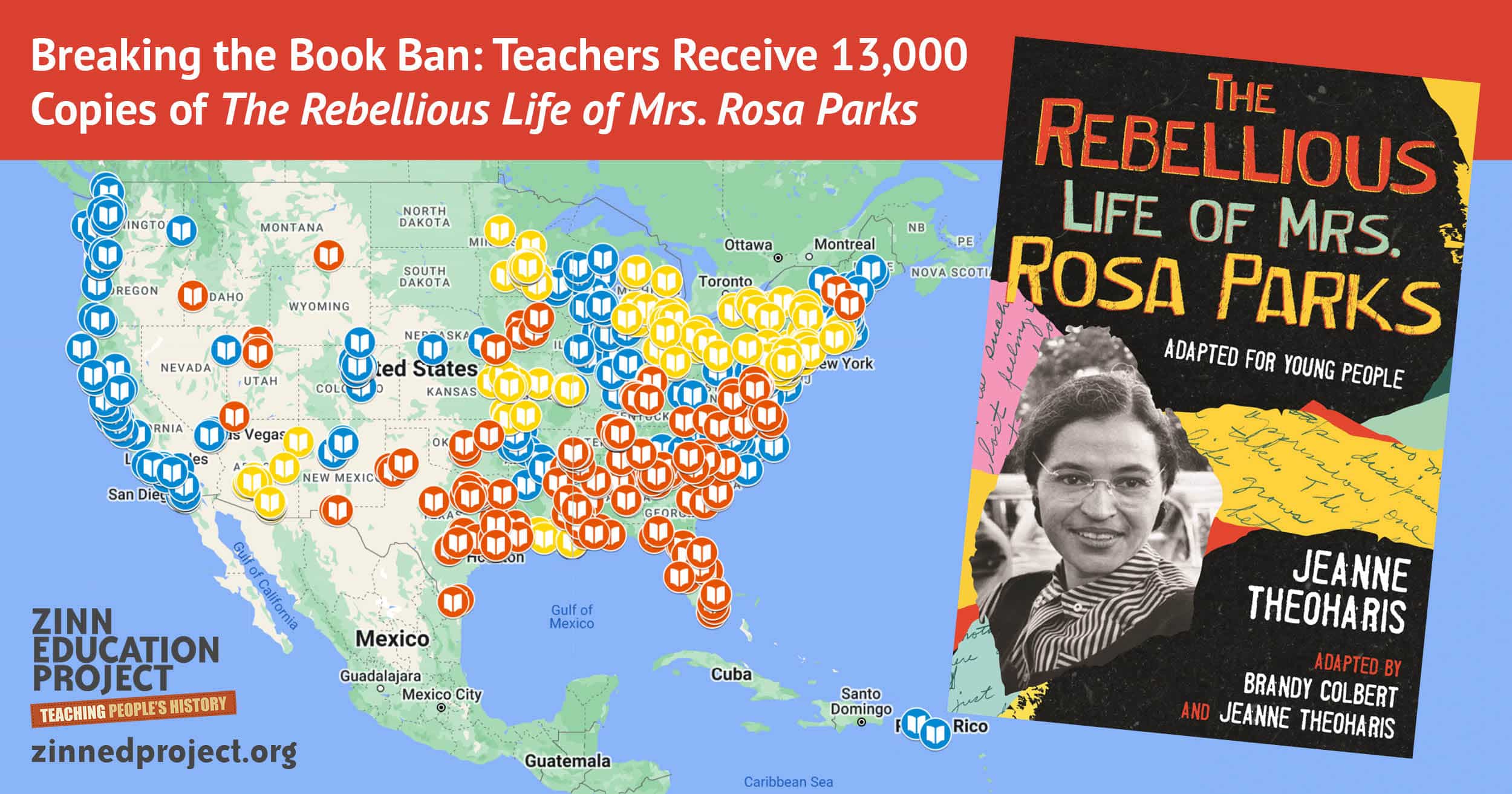
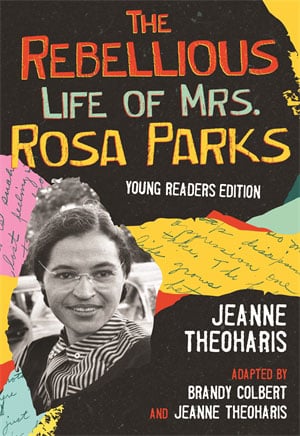





Twitter
Google plus
LinkedIn